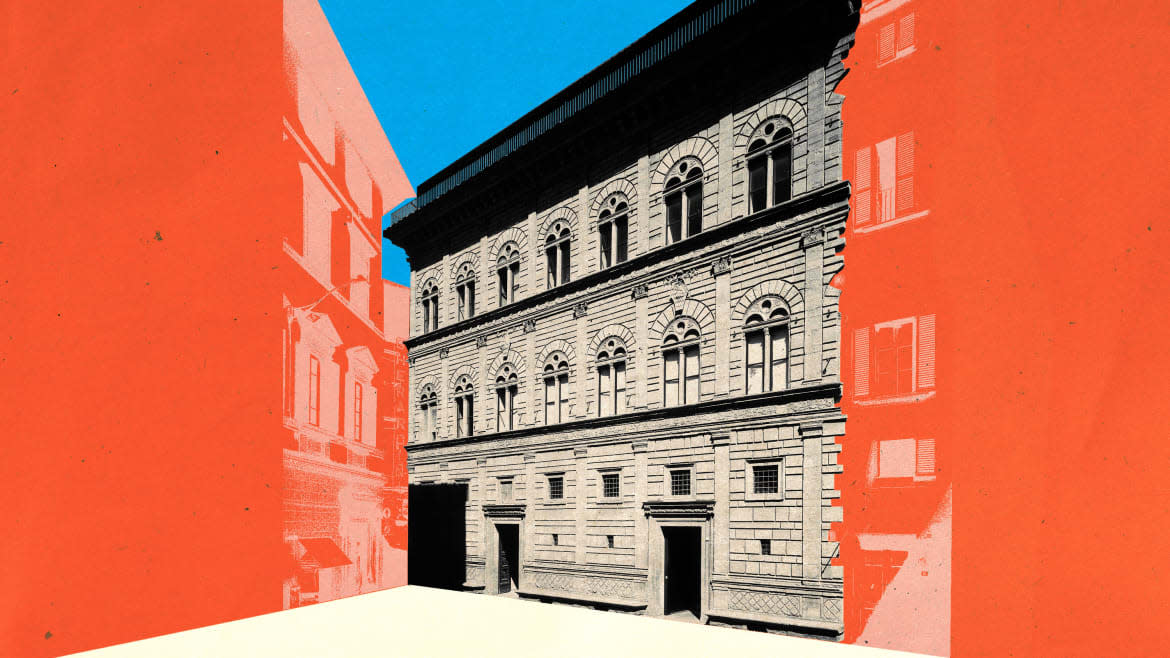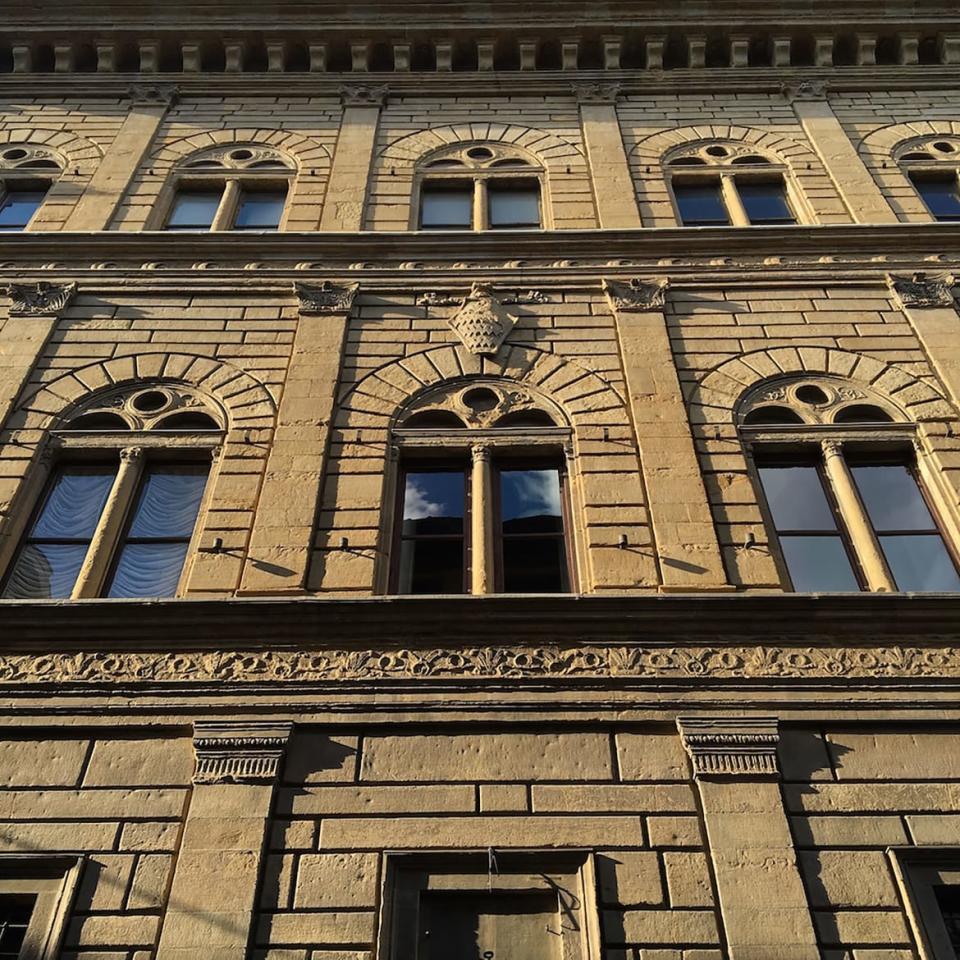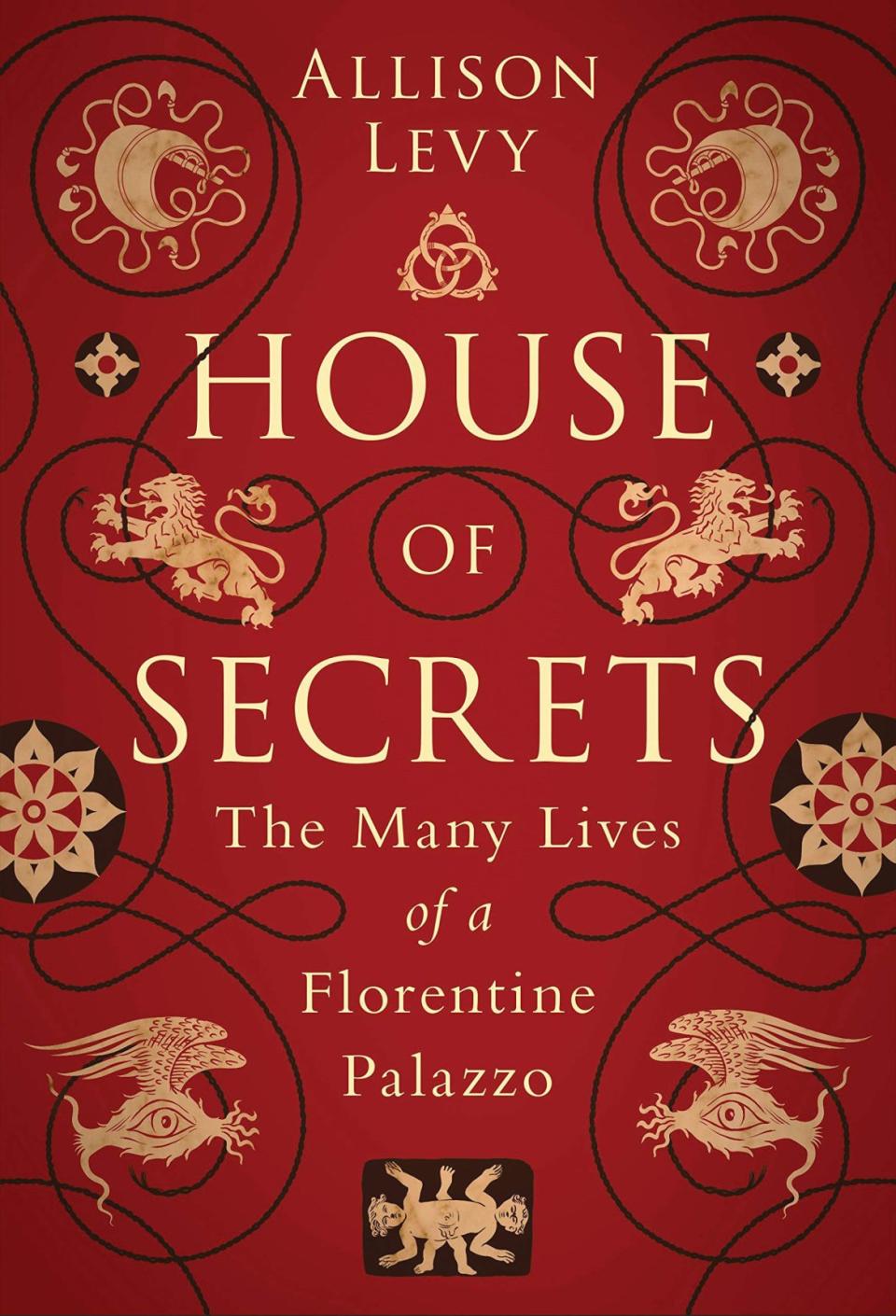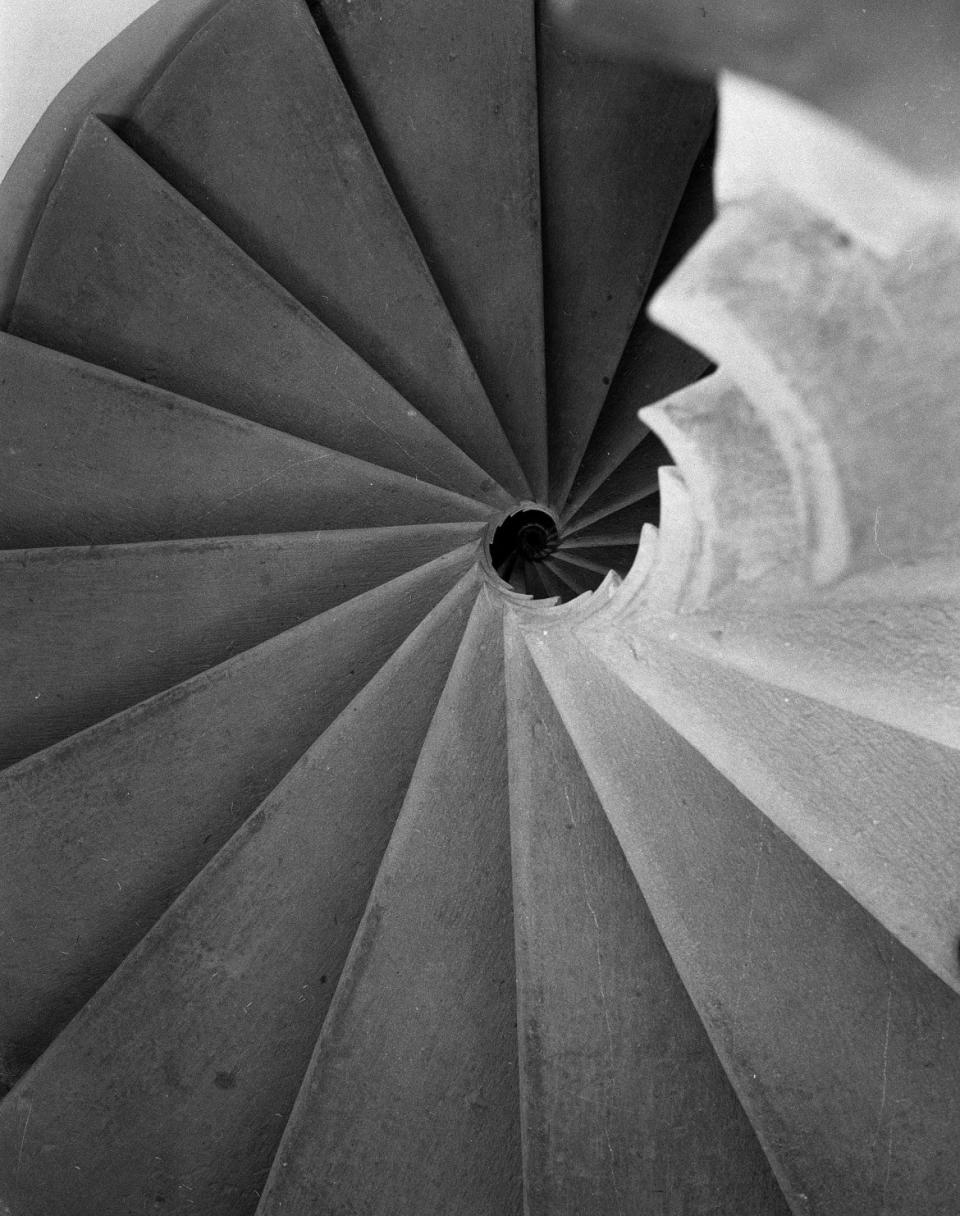The Wonder of Living Alone in One of Italy’s Most Famous Palaces

I’d been instructed by the agency to ring at the side entrance. As my eyes scrolled over the colossal entryway, seeking a way in, a little man suddenly appeared in the door. And I do mean in the door; for a hatch not much larger than my overstuffed Samsonites had been cut out of the lower quarter of the wooden portone. The idea had been to make passage from one side to the other easier, but the effect was peculiar. As was the gatekeeper himself. Niko, whose size nearly matched that of the diminutive trapdoor, wore a long canvas sculptor’s smock that blotted out any hint of a body beneath, leaving in full view only a big, round jack-in-the-box head. The elderly Greek man with the impeccable British accent—and, I’d soon learn, a very short temper—apparently had been expecting me. “Just in time,” he announced. “I’m about to take my break.”
I, on the other hand, was caught completely off guard. An Assistant Professor of Italian Renaissance art history, embarking upon a yearlong sabbatical to write another weighty monograph, I hadn’t anticipated having to shimmy my way into Palazzo Rucellai. Nevertheless, I maneuvered my body, most unceremoniously, through the wicket. Hardly the ideal entrance. But then, as I untucked myself and stood up straight, Alberti’s courtyard opened up around me.
It was nothing short of perfection: a vision in chalk white and cool gray pietra serena, without a single cypress in sight. I walked into the center and slowly began to spin around, carefully keeping time with Alberti’s slinking arches, so entranced I might have continued indefinitely had it not been for the grunts Niko emitted as he struggled to get my luggage through the rabbit hole after me.

Palazzo Rucellai bathed in sunlight.
Niko pointed me upstairs, where I discovered a different story—a quirky assemblage of the magnificent and the misfit. Even more disconcerting than the décor, however, was the apartment’s position within the palace. “Archivio” was situated in the front corner of the building—wedged between the top two floors. It faced the street, but there was no view and not the slightest suggestion from the facade that there might be a hollow space hiding behind and between Alberti’s carefully set windows. Access to the rest of the palace came via an antique birdcage elevator that opened directly into the apartment or via its own secret stairway, an offshoot from the main staircase originating just above the second-floor landing, eerily concealed behind a door within a wall—much like the surprise door within a door that, only a short time before, had served as my gateway into Palazzo Rucellai.
Just as soon as I’d gotten my bearings, Niko rang. “I need you to come downstairs!” he barked. “Contessa is here now.”
Was I being summoned? How oddly exciting, I thought.
I tucked in my T-shirt and headed down to meet the dowager of my dreams. But when I re-entered Alberti’s cortile, prepared to curtsy, or whatever it was one did, I found a very different picture: the serene space I’d just passed through was now dominated by a tall young woman making a futile effort to discipline three brats kicking one of the courtyard’s weathered columns as though it were a mangy old dog. This must be the daughter-in-law, I reasoned. Or the daughter-in-law’s nanny?
Alas, this was the contessa.
Everything about her clashed with my fantasy of the Italian nobility. I’d imagined something along the lines of Bona Frescobaldi—with maybe a bit of an aging, bespectacled Sophia Loren thrown in for good measure: assisted skin, mannequin hair, heavy gold, dressed for an audience in a nubby knit dress, her imminent arrival announced by the steady click-clack of Ferragamo grosgrain ribbon-adorned patent-leather pumps and the intoxicatingly sweet waft of Santa Maria Novella vapors. In other words, a daunting matriarch.

Instead, my contessa would turn out to be nothing more than a meddling Emma Woodhouse, a boring throwback with an acerbic demeanor that already suggested to me a profound bitterness, a simultaneous loving and loathing of the role to which she’d ascended. I let my imagination run wild: her husband had given her a title and little else. Don’t get me wrong—the name was priceless, but perhaps it no longer paid the bills. And so, I fantasized, the ever artful contessa, forced to downsize to a suburban villa, had begrudgingly converted the former servants’ quarters into apartments, letting the rent she collected each month serve as a salve upon the humiliation of it all.
A week into my stay and I was still tripping over the impedimenta of the nobility. It was a far cry from the anemic housing I’d had as an academic. A mammoth armoire painted with saccharine scenes of frolicking shepherdesses loomed over me. Smaller, though no less haunting, was the pair of rosso rubino marble-topped tables that, mimicking the ruby-red color of dried blood and flanking my headboard, contributed to many a restless night. But the real monstrosity in the room was a great ebony sideboard, its upper half resembling one of those creepy curiosity cabinets, its dozens of tiny drawers filled with freakish specimens, like monkey thumbs or two-headed rats. Such Wunderkabinette were popular from the mid-sixteenth century through the so-called Age of Reason and up to the early Age of Enlightenment. I was at once disappointed and relieved to find these drawers empty for our current age.
The lower half of this baroque albatross, resembling a proper credenza, offered a great deal of practical storage space. One afternoon, in an effort to make a home for my books there, I unearthed a badly chipped but complete vintage set of Richard Ginori china in the Italian Fruit pattern. Now this was a wonder! Clearly, the contessa had overlooked it when collecting her booty. Never mind that the delicate pattern of ripe susine, albicocche, and fragoline competed with Murano glass goblets of deep amethyst hue and medieval proportion; I kept the full service proudly displayed on the long walnut banquet table, as though I had a standing dinner date with Cosimo de’ Medici.
Illuminating the room were silver-plated candelabra the size of small lemon trees, which cast fitful shadows over cracked plaster walls. The latter were covered with less than mediocre landscape paintings, made-up scenes of the “School of ” variety; still, they kept me reasonably elegant company. Overhead, a medieval truss of squared-off elephantine tree trunks obtruded upon my already squat quarters. And the situation underfoot was no less menacing, the original terracotta pavement being in such poor condition that the contessa had rolled out one of those cheap sisal mats from IKEA, over which she’d scattered an array of threadbare antique rugs. I must admit it worked, aesthetically; but the pile of the rugs was so badly worn that one could feel the prick of modern fibers poking right up through the weave. Hence my daily sisal splinter, a harsh reminder of egalitarianism, modernity, globalization—all those ideas that had enabled my present adventure and yet, with every new piercing, tempered the thrill of my palace idyll.
Suffice it to say, the contessa had dumped so much aristocratic detritus into the room that only 15 percent of the 540-square-foot floor plan was even navigable. There was simply no way to move the couch upholstered in burnt orange chenille; that whale wouldn’t budge. Similarly permanent was the gigantic “antique” wine barrel—Tuscan kitsch I could have done without. Any remaining space was swallowed up by an inconceivable number of Victorian rosewood balloon-back dining chairs—truly lovely, taken individually, but, as a herd, burdensome beyond belief.
Yes, I was living large among orphaned heirlooms, quietly nestled in this repository of Rucellai disinheritance. To be sure, the apartment had been aptly named. But “Archivio” stored more than just cast-off furniture and chipped china. It was also, I began to perceive, a guardian of secrets, a keeper of memories, a confidant who had heard it all. As an outsider invited in, I found myself living between floors, between centuries, between lives. Or so I mused when I should have been unpacking my books.

A secret stair, dating to the 15th century, found at the rear of the palace.
As I was the sole tenant—Niko had let this slip on day two—I’d been enjoying myself immensely, having effectively the run of the house. Niko lived there, too, but only Sunday evening through Friday evening, and he slept in an alcove just off the courtyard; well past retirement age, the “guard” was safely tucked in every night by 8:00 p.m. That’s when, as a morgue-like hush fell over the palace, I would roam the halls, knocking on blind archways, daring the ghosts to wake. I took great delight in swishing down the marble staircase, bowing to battered portrait busts of adopted forefathers at every dusty landing. I even took the liberty of sorting through the family mail, which still passed through a slender slot carved to resemble a foreshortened Roman sarcophagus—or a parted mouth. Though I knew that Florentines had long made a habit of recycling family names, standing there in the vestibule, fingering a certain Giovanni’s correspondence, took my breath away.
I also went behind the scenes—and between the walls. I drew back curtains in quarters that were not mine to enter, enjoying views of the city that only Rucellai eyes, I liked to imagine, had taken in. I discovered in a rear corner of the piano nobile, tucked not too far from a tiny rectangular chapel, itself barely wide enough to hold a pair of prie-dieux, a disquietingly narrow spiral service stair which ran, unilluminated, from the tip-top of Palazzo Rucellai to rock bottom.
Adding to the sense of peril was the absence of a central solid axis: In lieu of a supporting pole, let alone a railing of any sort, was a brittle rope, knotted at regular intervals and suspended some 70 feet. With steady steps, I began the ascent, my left hand tightly grasping the knuckles of the fiber pendulum as my right hand trailed flatly along the enclosing wall. I didn’t manage to complete a single revolution before I seized up with fear—if the contessa found out …
Rather than lose my footing in the dark, I returned to the front of the palace and jimmied my way into the ballroom. I entered easily enough, only to discover that the enormous square room, with its white-on-white wedding-cake styling, was already occupied. Gamboling overhead was a gaggle of gauze-draped maidens, in varying degrees of undress. I kept my head cocked back for a good five minutes, titillated by the risqué fresco, its sensuality heightened by a sorbetto-tinged palette. Perfectly besotted with these rococo beauties, I floated up to join them on top of the world.
Enchanted, I remained.
What was I looking for, breaking and entering my way through Palazzo Rucellai after hours? There was the novelty of the address, undeniably; that I now possessed a key to the front door of Alberti’s magnum opus exhilarated me. But my stealth meanderings through the house weren’t merely of an academic nature. There was also something achingly personal about my movements: the way I fingered the mail, for example, or the way I cupped doorknobs, even the way I sank into and petted the upholstered furniture—all of these gestures betrayed a dire and unapologetic covetousness on my part. For what I’d finally found in this house, I believed, was a home.
Excerpt from House of Secrets: The Many Lives of a Florentine Palazzo (Bloomsbury, 2019) by Allison Levy.
Get our top stories in your inbox every day. Sign up now!
Daily Beast Membership: Beast Inside goes deeper on the stories that matter to you. Learn more.

